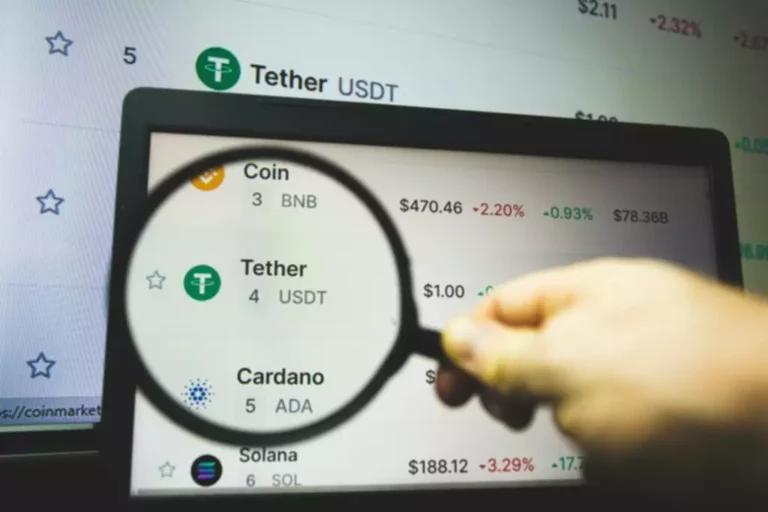This is because WBTC is essentially an ERC-20 token and operates seamlessly with Ethereum’s ecosystem. Once within the ecosystem, you can even swap or promote these tokens like another asset on the Ethereum community. Imagine different banks labored in silos with no integration between any of them. If you operate with one financial institution and your pal operates with another, attempting to maneuver money throughout to the opposite would not solely be a headache, but it may be downright impossible.
- The internet is a revolutionary system partly because of its excessive interoperability.
- However, bridges also present sure setbacks, which must be the priority of everybody in the blockchain panorama.
- The amount of BTC you want to port gets locked in a wise contract, and the equal tokens on the destination blockchain community are issued or minted.
- As part of the proof-of-work consensus, the origin chain generates sequences of headers at no cost for honest transactions.
- By choosing the proper bridge and understanding its particular charges and functionalities, you probably can successfully navigate the interoperable landscape and maximize your blockchain expertise.
- Interoperability refers to the capability of blockchains, which share the same underlying architecture, to speak with one another in order to facilitate info sharing.
The security of blockchain bridges varies based mostly on their design and implementation. While trustless bridges offer elevated security via decentralized control, lowering the reliance on a single entity, they are not completely risk-free. Trusted bridges, controlled by centralized events, present a different security mannequin with their very own set of dangers and advantages. Ensuring security in blockchain bridges includes auditing, steady monitoring, and the implementation of safety protocols to mitigate potential vulnerabilities. A blockchain bridge is a platform that permits different blockchain networks to speak and change data.
What Are Some Various Kinds Of Blockchain Bridges?
When utilizing custodial bridges, go for established manufacturers with long-term track information. To use the Binance Bridge, for example, you will first select the chain you’d prefer to bridge from and specify the amount. You will then deposit the crypto to an address generated by Binance Bridge. After the crypto is shipped to the tackle during the time window, Binance Bridge will send you an equivalent quantity of wrapped tokens on the opposite blockchain.
These bridges facilitate cross-chain transactions and allow users to entry decentralized functions on different blockchains. Despite their risks, the growth of alternate Layer-1 blockchain ecosystems makes blockchain bridges an increasingly important part of the cryptocurrency panorama. As extra customers demand to leverage their assets’ values in numerous ecosystems, reliance on bridging protocols will grow. The holy grail of bridging protocols remains seamless crosschain interoperability whereas minimizing central points of failure. As such, considerable analysis is underway to improve present bridge implementations and create new ones that complement the principles on which crypto itself was created.

Both are essential aspects of the blockchain world and a crucial examine focus for PPIO (Peer to Peer Input Output). This “lock-and-mint” and “burn-and-release” procedure ensures that the quantity and price of tokens transferred between the two chains stay fixed. Let’s say you could have ETH on Ethereum Mainnet however want cheaper transaction fees to explore completely different dapps. By bridging your ETH from the Mainnet to an Ethereum L2 rollup, you can take pleasure in lower transaction fees.
What’s A Blockchain Bridge?
In order to convert coins into one other cryptocurrency, customers must rely on the members of the federation to confirm and make sure the transaction. The federation members are largely incentivized to maintain transactions operating; they aren’t targeted on identifying and preventing fraud. Trust-based bridges is normally a fast and cost-effective selection when transferring a large amount of cryptocurrency. However, it’s essential to understand that federation members are largely incentivized to keep transactions running, to not establish and prevent fraud. Blockchain bridges facilitate the switch of knowledge and worth across completely different blockchains. Porting tokens to another blockchain might help remedy scalability issues and cut back charges.

For a fluid blockchain future, interoperability just isn’t solely essential – it’s a necessity. Being in a place to work and move belongings across networks will be a driving force in the digital world, from cryptocurrency networks to Metaverse platforms. As the OG blockchain-based asset, Bitcoin, continues to be the most popular cryptocurrency to date.
Multichain Bridges
Using our earlier BTC and ETH example, what occurs is that the blockchain bridge generates a smart contract that locks your BTC, and points an equivalent quantity of wBTC. This, in turn, represents the transferred quantity of BTC “wrapped” in an ERC-20 contract, permitting this token the uses and functionalities of an Ethereum token. This represents a “wrapped” token, that’s, a cryptocurrency of a blockchain lined by a protocol of another blockchain, and might thus be recognized, translated and governed by the target blockchain. The development of the blockchain industry is pushed by fixed innovations. There are the pioneer protocols like the Bitcoin and Ethereum networks, followed by a myriad of different layer 1 and layer 2 blockchains.

A consumer would possibly choose to deposit their collateral on a blockchain with stronger security assumptions and borrow belongings on a chain that facilitates faster, cheaper transactions, for example. Blockchains have gotten increasingly specialised, however, and provide totally different tradeoffs to their end-users. Bitcoin is extremely secure and decentralized but cannot carry out extra refined computations.
Connecting blockchains might doubtlessly allow malicious actors to use the bridge and access property or info saved on both chain. Different blockchain bridges have different targets and strategies to safe these goals. These different targets and methods can affect safety to a certain extent. Before transferring tokens, it is strongly recommended to look into a bridge and its security practices. Many believe that the means ahead for blockchain is “multi-chain,” which means that quite a few chains will host their own flourishing ecosystems.
What Are The Several Types Of Blockchains?
The blockchain bridge will lock your BTC in a contract on Bitcoin’s mainchain and mint an equivalent of wrapped BTC (WBTC). Wrapped BTC is pegged to the value of bitcoin and may be unwrapped to get an equivalent worth of BTC at any level. While a bridge can alleviate congestion on a busy network, moving assets away to another chain doesn’t remedy the scalability problem as customers won’t always have access to the identical suite of dapps and services. For instance https://www.xcritical.in/, some Ethereum dapps usually are not obtainable on the Polygon Bridge, which limits its scaling efficacy. Blockchain bridges help to minimize visitors on congested blockchains, such as the Ethereum ecosystem, and distribute it over different, less crowded blockchains, enhancing the Ethereum network’s scalability. Withdrawing from a crypto bridge can differ depending on the specific platform you’re utilizing.
They take away the official’s role with technology and enable users to stay in control of their belongings. Georgia Weston is one of the most prolific thinkers within the blockchain house. In the previous years, she got here up with many intelligent concepts that introduced scalability, anonymity and more options to the open blockchains. She has a eager curiosity in matters like Blockchain, NFTs, Defis, and so on., and is at present working with 101 Blockchains as a content writer and buyer relationship specialist. Cross-chain growth continues to develop in complexity, due partly to the growing variety of blockchains and the differences between the chains. Asset trade and asset transfer are the most typical forms of cross-chain implementation.
Allow Cross-chain Connectivity
Blockchain bridges act because the architects of interoperability, seamlessly connecting beforehand isolated blockchain ecosystems. They allow the switch of property beyond simple swaps, empowering you to unlock alternatives that transcend particular person networks. Blockchain bridges have turn into a essential expertise today to enable crypto-era knowledge, belongings, and different info to be shared between different environments. The risk of uniting entirely isolated techniques has enabled a extra interconnected community.
Users deposit belongings into a pool on one blockchain and receive an equivalent worth on another blockchain. Instead of individual copies, the liquidity pool methodology envisions a constantly flowing river of cross-chain value. In the absence of bridges, crypto assets stay tethered to their native networks, unable to participate in other ecosystems being ‘isolated’. This fragmentation stifles liquidity, impedes DeFi adoption, and ultimately limits the scope of crypto’s revolutionary potential. While each trusted and trust-minimized bridges have their strengths in capabilities, and potential flaws within the design, you probably can decrease the potential risks when utilizing blockchain bridges.
Unidirectional bridges are one-way bridges that permit you to only ship belongings off to another blockchain, but not again to the native network. The team behind a crosschain messaging protocol will often select its operators from trusted corporations and blockchain infrastructure providers to restrict the variety of nodes and, due to this fact, inefficiencies. But what if a BTC holder desires to use their cash on an Ethereum, Solana or Terra DApp? Selecting and integrating a blockchain bridge requires careful consideration of various elements, including security, compatibility, and the specific wants of the blockchain software. Ethereum bridges provide a method to switch assets to EVM-compatible networks like BNB Smart Chain, Fantom, and Avalanche.
An instance of an atomic swap is where a token on the first blockchain is relocated in order that it is unavailable, and one other token is produced on the second blockchain. In this example, the token on the second blockchain should be established provided that the token on the primary blockchain is confirmed to be unavailable. Bitcoin’s PoW consensus protocol and Tendermint’s PBFT consensus protocol are examples of cross-chain technology utilized in heterogeneous networks. Various initiatives have been developed over time to attach networks, permitting for the easy flow/exchange of information from one community to another whereas also rising the adoption fee. At ChainPort, bridging times common at lower than 1 minute for many blockchains.
Using the bridge, Alice will be capable of convert ETH on Ethereum for wETH on Avalanche. If the consumer deposits 1,000 USDT on Ethereum, they will withdraw the 1,000 USDT a Solana consumer beforehand deposited — minus whatever fees the bridging protocol itself expenses. Crosschain bridges depend on good contracts deployed on both the source and goal blockchains. Today’s most widespread bridge implementations use a simple what is a blockchain bridge and how it works “mint and burn” strategy to bridge assets. Assets are locked in a sensible contract on the source chain before the goal blockchain good contract mints a wrapped version of that asset. For example, when using the Wormhole Ethereum/Solana Portal, you would deposit ETH on Ethereum and receive Wormhole Wrapped ETH on Solana.
Some crosschain protocols enable the identical asset to move between different blockchains. Centralized stablecoins — like USDT or USDC, for example — are deployed on multiple networks. Because the target blockchain good contract can not mint USDT itself, it should rely on pooled assets on either facet of the bridge. For a person to send USDT from Ethereum to Solana, there should already be more USDT within the target chain’s good contract than the total being sent.
